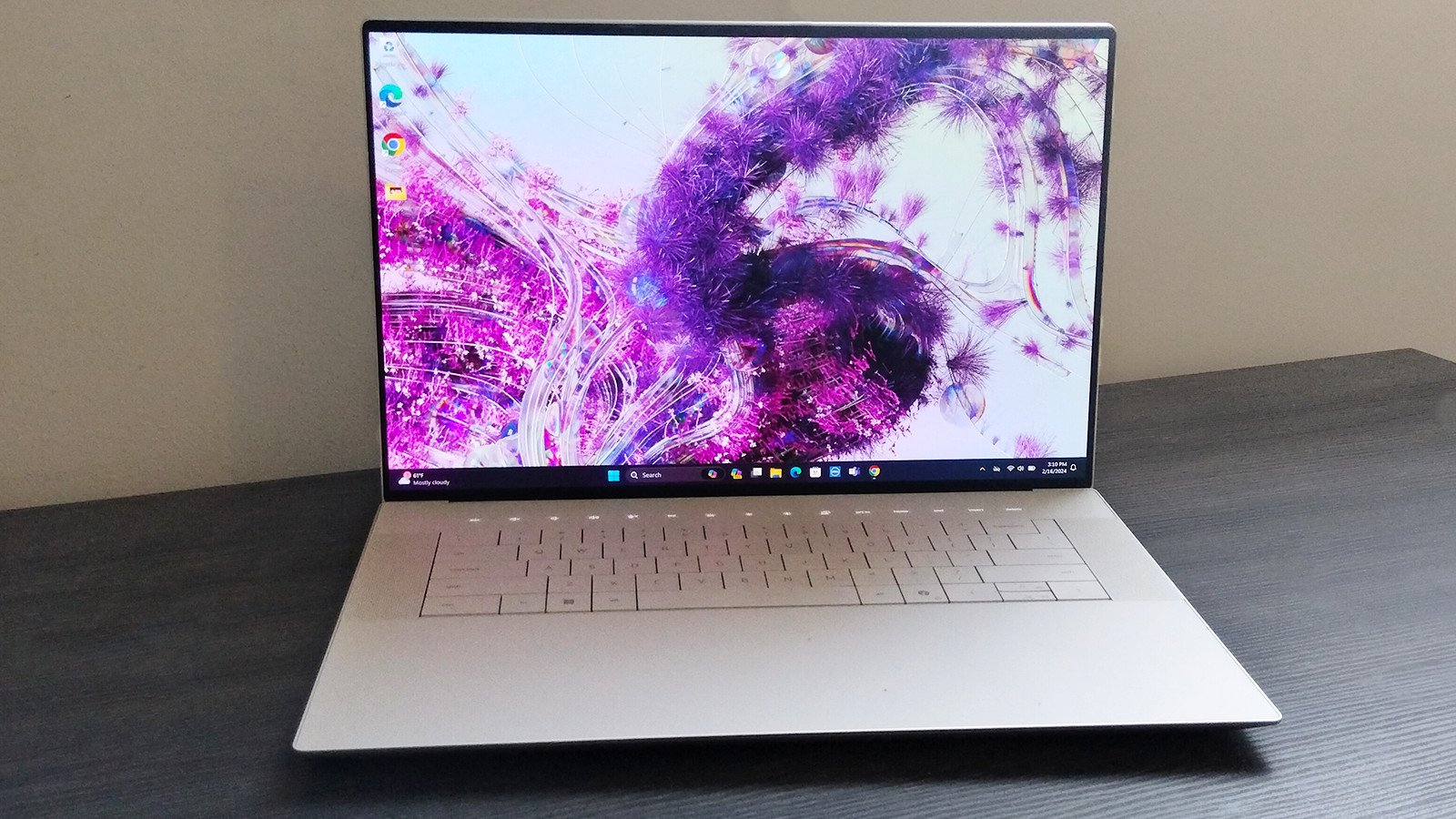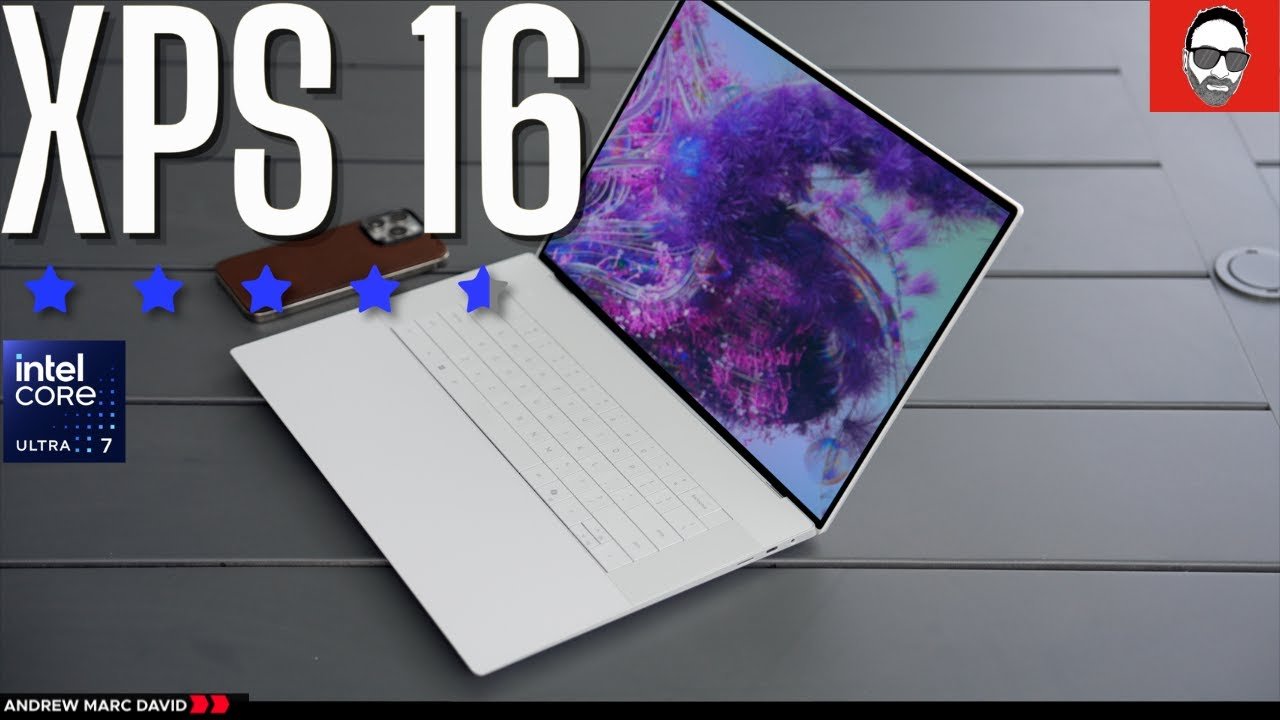Dell has once again redefined the premium laptop landscape, blending minimalist design with formidable creative power in its new XPS 16. This machine isn’t just an iteration; it’s a bold statement about the future of high-performance computing for professionals on the move. Its sleek, unified aesthetic challenges conventions while packing the horsepower to tackle the most demanding workflows.
The Dell XPS 16 (2024) is an exercise in opinionated design. Drawing heavily from the polarizing aesthetic of the XPS 13 Plus, Dell has scaled up its vision of a minimalist, futuristic powerhouse. The chassis, meticulously carved from a single block of CNC-milled aluminum with a Gorilla Glass 3 palm rest, feels exceptionally rigid and premium. Opening the lid reveals the laptop’s most debated features: a seamless haptic touchpad that blends invisibly into the palm rest, a “zero-lattice” keyboard with large, flat keycaps, and a capacitive touch bar that replaces the traditional function row. This is a machine that demands you adapt to it, not the other way around.

Performance is where the XPS 16 truly asserts its dominance as a MacBook Pro competitor. Outfitted with Intel’s latest Core Ultra processors and configurable with up to an NVIDIA GeForce RTX 4070 Laptop GPU, this is no mere ultrabook. It chews through demanding creative tasks like 4K video editing, complex photo retouching, and 3D rendering without breaking a sweat. The vapor chamber cooling system does a respectable job of managing thermals under load, though the fans will certainly make their presence known when you push the hardware. This isn’t a dedicated gaming rig, but it can comfortably handle modern titles at reasonable settings, making it a versatile tool for work and play.
The 16.3-inch InfinityEdge display is, simply put, breathtaking. The optional 4K+ OLED touch panel is the star of the show, delivering incredibly vibrant colors, perfect black levels, and razor-sharp detail that makes creative work an absolute joy. Even the base FHD+ non-touch screen is bright and color-accurate, but the OLED is worth the upgrade for any visual professional. The slim bezels and 16:10 aspect ratio create an immersive canvas that feels expansive, whether you’re scrubbing a video timeline or managing multiple windows.
However, the user experience is a double-edged sword. The keyboard offers shallow travel, which may not satisfy fans of a more tactile feel, but the large keycaps are comfortable for long typing sessions once you acclimate. The invisible trackpad is impressively responsive, but finding its edges without looking can be a frequent annoyance initially. The biggest point of contention remains the capacitive function row. It looks clean, but the lack of physical feedback for adjusting volume or screen brightness is a step back in usability. Furthermore, connectivity is purely futuristic, with three Thunderbolt 4 (USB-C) ports, a microSD card slot, and a headphone jack. Be prepared to live the dongle life, as USB-A and HDMI are nowhere to be found.

Ultimately, the Dell XPS 16 is a triumph of design and engineering for a specific type of user. It’s a beautifully crafted, immensely powerful machine that makes a bold statement. If you are a creative professional who values top-tier performance and a cutting-edge aesthetic and are willing to embrace its unconventional input methods and limited port selection, this laptop is a compelling, if expensive, choice. For those who prioritize practicality and tactile feedback over minimalist form, the XPS 16’s deliberate design choices may prove to be more of a frustration than a feature.

Where to Buy:
https://www.amazon.com/s?k=Dell+XPS+16+%282024%29&tag=cp01a-20

Dell XPS 16 (2024) Quick Summary
Key Scores:
-
Value:
80% -
Design:
92% -
Performance:
93% -
Quality:
91% -
Popularity:
85%
Top Pros
- ✅ Exceptional performance handles demanding creative software with ease.
- ✅ The stunning 4K+ OLED display is a dream for visual work.
- ✅ Premium build quality features a robust aluminum and glass chassis.
- …
Key Cons
- ❌ The capacitive touch row lacks tactile feedback for common functions.
- ❌ Port selection is limited to USB-C, requiring adapters for many peripherals.
- ❌ The invisible haptic trackpad can be disorienting for new users.
- …










 Visit Claritypoint.AI
Visit Claritypoint.AI






